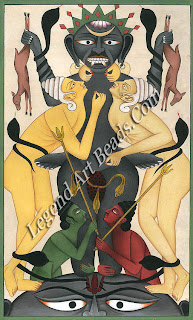 I shall keep cautioning readers about the use of 'philosophy' and
'philosophical' in our context. Historians of western philosophy beginning with
Erdmann and uberweg in the last century, and continuing with virtually all academically
philosophers of the western world up to date have denied Indian thought the
title 'philosophy'. Enologists and oriental scholars, however, have been using
the term for Hindu, Buddhist, and Jain thought quite indiscriminately and this
did not matter too much because there was and there is the assumption that the
twain, professional orient lists and professional philosophers do not meet. I
think this is wrong. It is extremely difficult to make them meet, because a lot
of cross disciplinary studies are needed for both the philosophers will have to
read some original tracts of Indian thought and its paraphrase in other Asian
languages; and the orient lists will have to acquire sonic knowledge of
contemporary philosophy, especially on the terminological side. This has not
been done: scholars who wrote and write on Indian ' philosophers ' Stcherbatsky
, Raju, Glasenapp, Edgerton, Radhakrishnan, to mention but a few did not
seriously attempt to read modern philosophy and use its accurate terminology.
All of them somehow assume that western philosophy had reached its climax with
Kant, Hegel, or Bradley, and hence they do not feel the need to improve on
their archaic terminology. I Think
they are mistaken. Terminologies previous to that of the analytical schools of
twentieth century philosophy are deficient.' It could be objected that
contemporary occidental philosophy may be unequal to the task of providing
adequate terminology for Indian thought patterns; this may be so, but pre twentieth
century occidental philosophy is even less adequate; modern philosophy uses all
the tools of the classical philosophical tradition, plus the considerably
sharper and more sophisticated tools of multi value logic, logical empiricism,
and linguistic analysis.
I shall keep cautioning readers about the use of 'philosophy' and
'philosophical' in our context. Historians of western philosophy beginning with
Erdmann and uberweg in the last century, and continuing with virtually all academically
philosophers of the western world up to date have denied Indian thought the
title 'philosophy'. Enologists and oriental scholars, however, have been using
the term for Hindu, Buddhist, and Jain thought quite indiscriminately and this
did not matter too much because there was and there is the assumption that the
twain, professional orient lists and professional philosophers do not meet. I
think this is wrong. It is extremely difficult to make them meet, because a lot
of cross disciplinary studies are needed for both the philosophers will have to
read some original tracts of Indian thought and its paraphrase in other Asian
languages; and the orient lists will have to acquire sonic knowledge of
contemporary philosophy, especially on the terminological side. This has not
been done: scholars who wrote and write on Indian ' philosophers ' Stcherbatsky
, Raju, Glasenapp, Edgerton, Radhakrishnan, to mention but a few did not
seriously attempt to read modern philosophy and use its accurate terminology.
All of them somehow assume that western philosophy had reached its climax with
Kant, Hegel, or Bradley, and hence they do not feel the need to improve on
their archaic terminology. I Think
they are mistaken. Terminologies previous to that of the analytical schools of
twentieth century philosophy are deficient.' It could be objected that
contemporary occidental philosophy may be unequal to the task of providing
adequate terminology for Indian thought patterns; this may be so, but pre twentieth
century occidental philosophy is even less adequate; modern philosophy uses all
the tools of the classical philosophical tradition, plus the considerably
sharper and more sophisticated tools of multi value logic, logical empiricism,
and linguistic analysis.
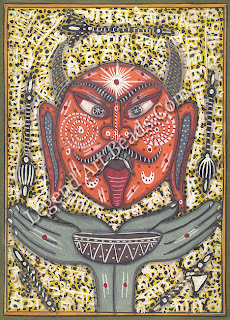
However,
with some very few exceptions, authors on Indian thought, both western and
Indian, have not tried to acquire and use these better tools they have so far
been satisfied to carry on with the philosophically outdated tools of the
European traditions of the last two centuries, especially of the Fichte Kant Hegel
tradition, widened in size, but not in quality, by additions of such British
philosophers as Bradley and Bosanquet. Exceptions so far have been few:
Professor Ingalls at Harvard, and his student Professor K. Potter, are known to
this author to avail themselves of contemporary philosophical terminology when
dealing with Indian material; and Professor H. V. Guenther, formerly at
Banaras, who consciously and determinedly capitalizes on the work of such
thinkers as C. D. Broad, Ayer, Russell, Wisdom, Veatch, Straw son, Ullmann, and
a large number of less known British and American teachers of philosophy.
If I
may venture a guess as to why writers on Indian philosophy refused to acquire
and use more up to date tools, I believe the main reason is not so much inertia
but the idea that Kant, Hegel, and Bradley, etc., were spirits more kindred to
the Indians; that their idealistic or at least metaphysical predilections
qualified them better for the providing of interpretative concepts than the
twentieth century anti metaphysical, anti systematic, anti 'idealistic'
philosophers (idealistic' in the popular, non philosophical sense, and emotive
equivalent of 'truth seeking' as opposed to Tact seeking'). Here again they
err; in the first place, the great philosophers of the European eighteenth and
nineteenth centuries were no more favorably inclined towards Indian philosophy.
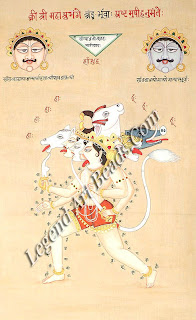 Than
are modern analytical thinkers; but more importantly, the fact of a system of
thought being closer in emotive tone to another system of thought does not guarantee
that the former is a competent arbiter of the latter. This wrong assumption
goes back to an even older historical phenomenon the great attraction, largely
sentimental, which nineteenth century German classical scholars and poets felt
for things Indian in the belief of a 'kindred sour; this is being echoed in
India by the majority of pandits and holy men: it is very hard to convince
pandits and monks in India that Sanskrit is not taught and spoken in high
schools in Germany, and that Germans are not the only Sanskrit scholars outside
India.
Than
are modern analytical thinkers; but more importantly, the fact of a system of
thought being closer in emotive tone to another system of thought does not guarantee
that the former is a competent arbiter of the latter. This wrong assumption
goes back to an even older historical phenomenon the great attraction, largely
sentimental, which nineteenth century German classical scholars and poets felt
for things Indian in the belief of a 'kindred sour; this is being echoed in
India by the majority of pandits and holy men: it is very hard to convince
pandits and monks in India that Sanskrit is not taught and spoken in high
schools in Germany, and that Germans are not the only Sanskrit scholars outside
India.
I
therefore submit that students of Indian philosophy should learn to use the
more precise terminology of contemporary western philosophy when they attempt
to translate and define Indian philosophical texts. From this standpoint it
might have been wise to substitute 'philosophy by some such word as 'ideology'
or 'speculative patterns' fur the bulk of Indian (and hence Tibetan) scholastic
lore; in fact, short of logic (nyaya, tarka), Indian philosophy has been
ideology. Yielding to the majority, however, we shall continue to refer to
these patterns including tantric patterns
as 'philosophy', bearing the said strictures in mind. Indian thought
does not contain much of what modern philosophers would call 'philosophy' but they would not object to tantric thought
being added as a new branch of investigation: as 'psycho experimental speculation.
I recommend this lengthy phrase, because it summarizes tantric 'philosophy';
but I shall not use it unless it proves acceptable to scholars at some later
date; I shall use 'philosophy' in this book, but whenever I speak about tantric
'philosophy' it is to be understood as shorthand for 'psycho experimental speculation'.

If the
old philosophical terminology is used the contents of most Indian systems can
indeed be told in very few words, but I am convinced that this succinctness is
as deceptive and vague as the terminology of classical philosophy. It is this
deceptiveness to which an Indian scholar like S. B. Dasgupta succumbed when he
wrote about tantric literature, that it was:
An
independent religious literature, which utilized relevant philosophical
doctrines, but whose origin may not be traced to any system or systems of
philosophy; it consists essentially of religious methods and practices which
have been current in India from a very old time. The subject matter of the
tantras may include esoteric yoga, hymns, rites, rituals, doctrines and even
law, medicine, magic and so forth
The
same scholar quotes a Buddhist tantric definition of tantrism, 'tanyate vistriyate
panamanerta its tantrain'. Now the ideologist who uses classical occidental
terminology would render this' that by which knowledge (or wisdom, intuition,
etc.) is extended or elaborated, is tantras. The vagueness of this
translation unnoticed by ideologists
because they are so used to it rests on an inadequate rendition of ‘pawl’;
without going into an elaborate analysis of 'pond , let me say that `wisdom' or
'intuitive wisdom' arc too vague, and for Buddhist tantras incorrect. Professor
Guenther translates judna 'analytical appreciative understanding', and this is
borne out by the Sanskrit definition; for if jiidna were the immutable wisdom,
say, of the Vedantic variety, it could neither be extended nor elaborated. The
Brahmanical or at least the Vedanta monist's jficita is a state of being, not
one of knowing; the rootpa, in its Vedantic sense, does not connote cognition,
but the irrefutable intuition of a single, all including entity, other than
which nothing persists; vet, even the term 'intuition' is not really adequate
here, because it still implies an intuiting subject and an intuited object,
whereas the Vedantic jiicina does not tolerate any such dichotomy.

We must
now show what philosophy is common to all Indian schools of religious thought;
and then, what philosophy is common between Hinduism and Mahayana Buddhism of
the tantric variety; we can omit Theravada Buddhism and Jainism from the
survey, because their axiomatic differences are too great on all levels from
the subject matter of this study. It is not advisable to try to list here the
differences between tantric and non tantric forms of Hinduism and Buddhism,
simply because they are not of a philosophical order. In other words, there is
nothing in Buddhist and Hindu tantric philosophy which is not wholly contained
in some non tantric school of either.
Or to
put it differently, tantrism has not added any philosophical novelty to
Hinduism and Buddhism; I do not even think that it emphasizes certain aspects
of Mahayana or Hindu philosophy more than do the respective non tantric
doctrines preceding it. To give an illustration: The Madhyamikas teach and
emphasize the complete identity of nirvana and samsara, i.e. of the absolute
and the phenomenal modes of existence; the Vajrayana Buddhists take this notion
for granted it is on the ritualistic or contemplatively methodical side that
differences arise, and these are indeed fund a mental. In a similar fashion the
non tantric monists or Sivites (Samkaracarya and his school, or the Southern
Siva Agama teachers), pronounce and emphasize the oneness of Siva and Sakti,
and so do the Hindu tantric of the Sakta schools they do not add any
philosophical or speculative innovation to their non tantric antecedents but
they do different things and practice different sadhana (contemplative
exercises). There is thus no difference between tantric and non tantric
philosophy, as speculative eclecticism is pervasive; there is all the
difference in the practical, the sad hand part of tantrism.
There
are perhaps just two elements common to all Indian philosophy: first, the axiom
of inevitable metempsychosis (this is shared with all religious systems
indigenous in India) and the notion of possible emancipation connected with the
former as the apodosis of a single proposition, the axiom of metempsychosis
being its protasis.
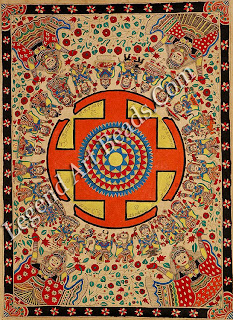
The
second common clement is the notion of some absolute which underlies the
phenomenal universe. Indian scholars and other votaries of the oneness of all
religions have postulated that the Vedantic Brahman and the Mahayanist s'anya
are the same concept, the difference being merely terminological. I shall with hold
my judgment on this point at present. If sunya and the brahtnan are concepts
which lean on the same proclivity to absolutize the permanent as experienced or
inferred. Beneath or alongside with the ephemeral, this would not suffice to
establish the identity of sunyata and the Brahman. The Mahayana Buddhist Would
certainly reject this identification, and the possible re joinder that he does
so because he has to insist on being fund a mentally different from the Brahmin
tradition is not justified until there is a precise analytical formulation of Brahman
and sunyata juxtaposed. No such formulation has come forth so far.
The
element common to Hindu and Mahayana philosophy is what Indian scholastic
methodology calls samanvaya, i.e. The institutionalized attitude of reconciling
discursively contrary notions by raising them to a level of discourse where
these contra dictions are thought to have no validity. It is due to samanvaya
that the gap between the phenomenal (samvrti, vyavahara) and the absolute
(paramartha) truths spares the Hindu or Mahayana thinker the philosophical
embarrassment the outsider feels when he views paramartha and vyavahara
philosophy side by side, in Indian religious literature.
What
distinguishes tantric from other Hindu and Buddhist teaching is its systematic
emphasis on the identity of the absolute (paramartha) and the phenomenal
(vyavahara) world when filtered through the experience of sadhanc. Tantric
literature is not of the philosophical genre; the stress is on sadhana. But it
seems to me that one philosophical doctrine inherent in esoteric Hinduism and
Mahayana Buddhism especially of the Madhyamikas
school the identity of the phenomenal
and the absolute world was singled out
by all tantric teachers as the nucleus around which all their speculation was
to revolve; I also believe that the dictionary discrepancies between the
various schools of speculative thought are really resolved in tantric sadhana:
all scholastic teachers in India declare that there is samanvaya, but the
tantric actually experiences it; I have tried to elaborate a model of this
phenomenon, which had been suggested to me by my own preceptor, the late
Visvananda Bharati.
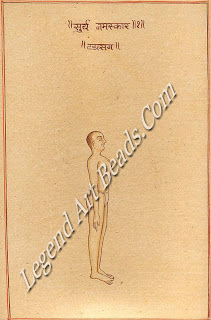
The
other philosophical doctrine common to Hindu and Buddhist tantra is probably
due to some sort of dictionary diffusion. It is of the type of a universe model:
reality is one, but it is to be grasped through a process of conceptual and
intuitive polarization. The poles are activity and passivity, and the universe
'Work' through
their interaction. The universe ceases to 'work' i.e.
its state of absolute oneness and quiescence is realized when these two poles
merge. They are merged doctrinarily by the repeated declaration of their
fundamental oneness, and are experienced by the tantric reliving of this merger
through his integrating scidhanci or spiritual disciplines.
Only
this much is really common between Hindu and Buddhist tantric doctrines, for
their respective ascriptions to the two poles are obverse to each other. The
Hindu assigned the male symbol apparatus to the passive, the female to the active
pole; the Buddhist did the opposite; the Hindu assigned the knowledge principle
to the passive male pole, and the dynamic principle to the active female pole;
the Vajrayana Buddhist did it the other way round.
All
tantric philosophy sets forth the power of a conceptual decision, notwithstanding
the fact that the execution of ritualistic contemplation is carried out in
minute detail. It appears that conceptual decision leading to permanent
enstasis (piano, bodhi) has higher prestige than other procedures. Thus we find
this statement in the account of a Tibetan teacher:
By a
doctrine which is similar to the application of fat to a wound when an arrow
piece remains inside, nothing can be reached; by a doctrine which is similar to
tracing the footsteps of a thief to a monastery when he had escaped to the
forest and mountain, nothing can be gained, so also having declared one's own
mind to be non substantial (by its nature), the fetters of the outside world
will fall off by themselves, because all is sunyata.
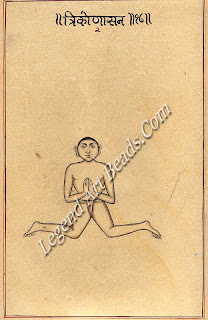
I have
no scriptural evidence for this surmise, but I feel that the tendency to
supersede the necessity of minute exertion by a basically intellectual act is a
typical tantric element of speculation. We find an important analogy in
orthodox Brahmanical thought: Samkaracarya declared that the cognitive
understanding of the meaning of the four great Upanisadic dicta, 'this atma is
brahma',`I am Brahma', `thou art that', and `the conscious self is Brahma,
results in immediate liberation. Most of his contemporaries and particularly
his later opponents (especially Ramanuja in the Eleventh century, and his
school) opposed this notion vehemently, insisting on prolonged observance and
discipline. Samkaracarya’s attitude towards tantra is ambivalent, but there is
reason to believe that he was profoundly influenced by tantric notions.
Romanticizing
German ideology was highly enthusiastic about Indian thought, and this is one
of the reasons why Hindu pandits are full of praise for German ideology. Thus,
H. V. Glasenapp wrote the notion that the whole universe with the totality of
its phenomena forms one single whole, in which even the smallest element has an
effect upon the largest, because secret threads connect the smallest item with
the eternal ground of the world, this is the proper foundation of all tantric
philosophy.
There
is decidedly such a thing as a common Hindu and Buddhist tantric ideology, and
I believe that the real difference between tantric and non tantric traditions
is methodological: tantra is the psycho experimental interpretation of non tantric
lore. As such, it is more value free than non tantric traditions; moralizing,
and other be good clichés are set aside to a far greater extent in tantrism
than in other doctrine. By 'psycho-exper- mental' I mean given to experimenting
with one's own mind', not in the manner of the speculative philosopher or the
poet, but rather in the fashion of a would be psychoanalyst who is himself
being analyzed by some senior man in the trade. This, I think, is the most
appropriate analogue in the modern world: the junior psychoanalyst would be the
disciple, the senior one the guru. The tantric adept cares for liberation, like
all other practicing Hindus or Buddhists; but his method is different, because
it is purely experi-mental in other words, it does not confer ontological or
existential status upon the objects of his meditations. This is the reason why tantric
are not in the least perturbed by the proliferation of gods and goddesses,
minor demons and demo nesses, and other creatures of various density and efficacy they do not attempt to reduce their number,
for these are necessary anthropomorphic ways of finding out 'what is inside the
mind'. The tantric entertains one or two axioms, no doubt the absolutistic and
the.
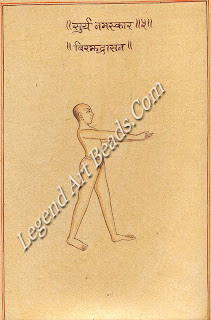
Phenomenal
nominal identity axioms, but they are not really important. Except as
speculative constructs Similarly, the psychologist entertains a few axioms, as
for instance the one identifying sanity with adjustment to the cultural milieu
of his environment which he shares with the anthropologists interested in
`culture and personality', or the axiom that there is such a thing as mental
illness but the practicing analyst is not really interested in these axioms as
he carries on his work in fact, these
axiomatic notions arc quite irrelevant to the execution of his work. They are
'at the back of his mind', but he can leave them there when he works.
To sum
up the rambling question whether or not we should make a distinction between
what is specifically tantric and what is not. On the theological and speculative
level the answer is decidedly yes. All tantric flout traditional, exoteric
orthodoxy, all put experiment above conventional morality denying ultimate
importance to moralistic considerations which is not contradicted by the fact
that most tantric texts pay initial homage to con ventional conceptions of
morality; and all agree that their specific method is dangerous, and radical,
and all claim that it is a shortcut to liberation.
I do
not believe that either the Hindus or the Buddhists were consciously working
out a similar psycho experimental pattern, and I do not think that they were
making a conscious effort to unite Hindus and Buddhists, even though they may
well have been aware of great similarities between their practices. But B.
Bliattacharya's statement the kjilacokra or Circle of Time" as the highest
god was set up by a particular section which wanted that the Hindus should
unite with the Buddhists under the common nonsectarian banner of the Time God Kalacakra
in order to present a united front against the cultural penetration of Semitic
peoples which had already invaded Central Asia and Iran.
Hardly
deserves attention except as a statement a la mode.
Hindu
scholars, with no exception to my knowledge, believe in a virtual dictionary
identity of Advaita monism and Madhya mika absolutism, and this is detrimental
to the study of Indian.
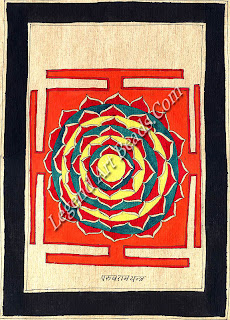
Absolutistic
philosophy, art irrelevant to any tantric study. B.Bhattacharya describes sunya
and the contemplation of it exactly like the Brahman of the Aviate monist; he
refers to the meditative process of the Madhyamikas as 'securing oneness with
the sunya or Infinite Spirit’s I think the similarity of diction and style is a
trap into which Indian scholars readily fall because there is no tradition of
textual criticism in India. Advayavajra, a famous Buddhist tantric teacher,
says: pratibhasa (i.e. apparent reality) is (like) the bridegroom, the beloved
one, conditioned only (i.e. subject to the chain of dependent origination,
pratitya samutpada, Tibetan brel), and sunyata, if She were corpse like, would
not be (likened to) the bride."Now one of India's authorities on Buddhist
tantrism, the late Pandit Haraprasad Sastri, misunderstood this singularly
important passage, when he paraphrased it.
Here.47,
sunyata is the bride and its reflection is the bridegroom. Without the
bridegroom the bride is dead. If the bride is separated, the bride groom is in
bondage.
H. P.
Sastri was probably aware of the fact that the main doctrine of Vajrayaria
theology is essencelessness in the true Buddhist sense. Yet he was misled by
the powerful modern Indian scholastic trend to see Advaita monistic doctrine in
Mahayana Buddhism.18 'Without the bridegroom the bride is dead' this is the exact inverse analogy of the
Hindu tantric dictum `Siva is a corpse without Sakti' (Siivah ,Saktivihinah ,Savah),
which provides an important rule for Hindu tantric iconography." H. P.
Sastri was obviously under the spell of this pervasive tantric proposition,
else it is hard to see why one of the most eminent old time Bengali
Sanskritists should have misinterpreted this important passage.
There
is also a subtler reason for the tendency to identify Buddhist and Hindu
tantric doctrine. Buddhist tantrism has borrowed many of its lesser deities
from Hinduism, or at least from the large stock of deities present in areas
which nurtured Hindu, Buddhist, and aboriginal Indian mythology. With the
Indian love for enumeration and classification, mythological groups of 3, 4, 5,
etc., items abound just as they do in doctrinary groups and it is quite irrelevant which came first,
Hindu or Buddhist tantric, in the application of these charismatic group
numbers; thus, for example, an old Hindu tantric text2 explains the five faces
of Siva as representing his five aspects as Vamadeva, Tatpurusa, Aghora,
Sadyojata, and Lana, each of which is a frequent epithet of Siva, with slightly
varying modes of meditation prescribed for each of them in Sivites literature.
To these aspects, different colures, different directional controls, etc., are
ascribed. The five dhydni Buddha’s also have different colures, directions,
etc., ascribed to them, control over which being the domain of each of the
Buddha’s.
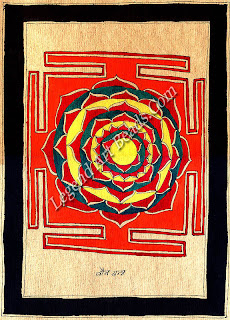
These
arrangements in numeric ally identical groups prompt many scholars to equate
the two mythologies. This is a perfectly permissible procedure if we study
diffusion of concepts as anthropologists; but the moment we extend diffusion
patterns from mythology to philosophy we are tempted to reason fallaciously,
according to the invalid model 'in mythology, Buddhist and Hindu, 3 (4, 5, 7,
etc.) tokens within one theme, therefore in philosophy, Buddhist and Hindu, 3
(4, 5, 7, etc.) tokens within one theme'. We tend to forget that philosophical
concepts, even when they are numbered according to a traditional pattern,
develop and change much more independently than do mythological concepts, for
the simple reason that Indian mythological icons, once created, are hardly ever
modified, because there is no impetus to modbify them on the contrary, the contemplatives feel more
successful if they succeed in visualizing the object in accordance with the
prescribed icon.* There is a lot of impetus, however, to amplify philosophical
doctrines the teaching or the commentary
of a revered preceptor is never as un ambiguous a thing as an icon: in the mind
of the pious scholar, an icon cannot be improved upon, a commentary must be
constantly clarified and amended, due to its inevitable complexity. This
dichotomy in the Hindu and Buddhist scholar's attitude no Modification of
icons, but constant elaboration of philosophical concepts is not shared, say,
by the Roman or Greek Catholic scholar: there are no canons about how Christ's
body or face should be modelled or painted. Hindu and Buddhist iconography
prescribes pictorial icons in exact detail, and there is very little scope for
modification.
The
Hindu scholastic's effort to explain Mahayana doctrine in terms of Vedantic
notions is of course much older than the nineteenth century, but its western
echo or counterpart reinforced the trend. Deussen's generation was not familiar
with medieval Hindu tantric texts which assimilated Vajrayana doctrine into a
Hindu frame. European indology perhaps arrived at this notion independently,
prompted by the inherent romanticism of early indology. In a text which I would
date between the twelfth and fourteenth centuries, a Kashmiri scholar discusses
the word makara as a name of the Universal Goddess (Devi); he there describes
her as 'beholding her own body as both sunya and nonsunya which he then glosses
in Vedantic fashion: sunya means of the form of pure mind, but not nonexistent
by nature, and nonsunya means polluted by Maya.
It is
quite possible that Makara was a Hindu tantric goddess, if the name is really a
personification of the `5 m s' pancamakara as it does seem to be. She is not
listed in Bhattacharya's Buddhist Iconography, nor in the fairly exhaustive
Sadhanamala. However, it is impossible to say which deity was Hindu and which
Buddhist in medieval tantric Kashmir. By that time, Hindu scholars had come to
avoid terms like sunya together with other terms of a specifically Buddhist flavor,
and Sitikantha's apology for its use in the prescribed meditation on that
goddess would indicate that her dhycina was originally Buddhist.

Modern
Brahmin scholars, who remain unfamiliar and hence unaffected by occidental
literature on Indian thought, continue to antagonize the Buddhist doctrines
about as vehemently as their classical forbears. Thus, Pdt. Laksminatha Jha,
former Head of the Department of Indian Philosophy at the Sanskrit
Mahavidyalaya, Banaras, says: 'If the root of phenomenal existence be manifest
to Intuition, then what is the foundation of phenomenal existence whereof it is
a manifestation, since everything (according to Madhyamikas) is sunya? Hence, the
doctrine that everything is sunya conflicts with everything, and because it
denies a foundation for anything, it has to be rejected.
It is
as yet impossible for a Hindu or a Buddhist unfamiliar with occidental methods
of philosophical analysis to state the basic difference of Hindu and Buddhist
tantric philosophy without a slant and with objectively valid precision. There
is a lot of precise terminology within the scholastic traditions of India, and
a fortiori of Tibet, but neither the Hindu nor the Buddhist has developed a
terminology sufficient to step out from the atma and no Alma complex. This we
can do at present perhaps only by aid of non Sanskritists analytical language.
This is the situation: the Hindu insists on the notion of a Self, or a
transcendent immanent personality principle, or an atman or Brahman. The
Buddhist, in theory at least, denies any self or any super self. However, in
practice the Vajrayana and to a certain extent all Mahayana Buddhist doctrines
have a sort of Ersatz self or super self, something which defies any treatment
in terms of the Hindu 'entity postulating' languages, yet it has some sort of
subsistence.
Now I
believe that the crux of the matter lies in the fact, not hitherto mentioned by
any scholar known to me, that the principle, or quasi entity which Mahayana and
Vajrayana accepts (Sunyata, Buddhahood, and all the complexes which tantric Buddhism
personifies in its deities, populating the universe with psycho experimentally
necessary and highly ingenuous anthropomorphic hypostases of philosophical 'non
entities', for example, the Goddess Nairatmya
Tibetan bdag med ma) is not a principle accepted in lieu of the Hindu
entity, but it is a principle accepted in spite of the Hindu principle, and
arrived at by totally different speculative processes. The Buddhist teachers
must have been aware of the danger of postulating anything that might smack of
the teachings which the Buddha had rejected; I am not persuaded by the rather
facile assumption, shared by many Indian and occidental scholars, that the
later Buddhists had forgotten that the mainstay of Buddhism had been
dismantling the notion of Being and of Self; nor by the oft propounded idea
that an ideological group which keeps up its distinct identity chiefly by
refuting another ideological group gradually assumes the latter's terms and
ideas.
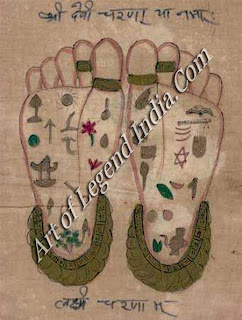
This
may be so among political groups (the Nazis developed a system and a language
which was very similar, in many points, to communism which they fought), but it
is hardly believable about scholars who are critically aware of their
doctrinary differences from the ideology which they oppose. In other words, I
cannot bring myself to believe that Asanga or Advayavajra or any other tantric
Buddhist teacher should have been unaware of the possible charge of 'your sunyata
or your Nairatmya are so thoroughly rarefied that there is no difference left
between them and Brahmin notions of Being'. Samkaracarya was called a crypto Buddhist
(prachanna Buddha) by his Brahmin opponents, because his Brahman was so utterly
rarefied and depersonalized that it reminded the less informed of the assumed
Buddhist nihil, the .sunya. Had any of the famous Buddhist teachers been
charged with being a crypto Hindu, such a charge would have probably been
recorded. As it is, scholastic Hindus feel a strong doctrinary resentment
against Buddhist doctrine, and it is only the Occidentalized, 'all religions are
basically one' Hindus who declare the Buddhist teachings as a form of Hinduism
or vice versa.
The
Buddhist dialectician proceeds from the denial of any entity, from the axiom of
momentariness, and arrives at the notion of s'anya; the Hindu dialectician has
a built in deity as the basis for his speculations on a self, on a static
entity. To the outsider, however, the rarefied Brahman of the Vedanta monists
and the Buddhist sunya may look similar or 'virtually' identical as
intellectual constructs. But they are not. Buddhism has no ontology, no
metaphysics; Hinduism has a powerful ontology this is the one unbridgeable
difference between all of its forms and Buddhism of all schools. That the
psycho experimentalist, the tantric, or anyone who takes sadhana seriously (and
taking scidhana seriously means regarding it as more important, though not
necessarily more interesting, than philosophy), may come to feel that there is
some sort of identity between sunyata and Brahman, is a different matter: it
does not conflict with what is said above, and there is no gainsaying the fact
that reports on the 'feeling' in Vedanta trained enstasis and in tantric
enstasis is very similar indeed.
Yet,
even if two authentic reports on enstatic experience should coincide, it does
not follow from this that the schools from which these reports derive teach a
similar philosophy. The notion upheld among religious teachers in India today
that a specific sadhana yields a specific philosophy or vice versa, I believe
to be wrong; it hails from an understandable pious wish that the corpus of
doctrine, embodied in one tradition, should be autonomous, and should encompass
both sadhana and philosophy. To put this point succinctly: no specific sadhana
follows from any one philosophy, nor does any specific philosophy follow from
any particular sadhana. Our own tantric tradition provides the best
illustration: tantric sadhana follows a single pattern, Vajrayana Buddhist and
Hindu tantric sadhana is indistinct guishable, in spite of the immense
disparity between the two philosophies.

I
admit, however, that the language of Vajrayana suggests ontology to a degree
where a scholar, who did not know Hindu or Buddhist philosophy, but did know
Sanskrit and modern occidental philosophy would be at a loss to realize that
Buddhist philosophy was non ontological as opposed to Hindu philosophy. To
quote a typical passage from a Vajrayaria text: 'of firm essence, unfragmented,
unbreakable, indivisible in character, incombustible, indestructible, sunyata
is vajra (i.e. the Buddhist Void is the Buddhist Adamantine, the Vajra). Word
for word, this description of sunyata and vajra could apply to the brahtnan of
the Veal 16n, and for that of all Hindus, and I do not think there is any
adjective in this passage which has not been applied to the Brahman, with the
exception perhaps of asauirryam (lit. 'un perforated'), which I have not seen
in a Hindu text; 'unbreakable, indivisible, incombustible', almost in this
order, is the description of the infinite Brahman in the Bhagavad-Gita .It is
futile to speculate why the tantric writers availed themselves of terms which
were excessively popular with their Brahmin opponents, in Describing the
ultimate.
I think
the main reason is simply that these terms are ready theological superlatives,
abstract enough for the statement of principles. On the other hand, these
adjectives would be less suggestive of ontology had they not been constantly used
by Hindu, i.e. ontological, thinkers. Without the Hindu reference, these terms
can be used as epithets to non ontological notions just as much as they can for
ontological ones. They may be semantic ally more suggestive of ontological
background, because 'things' arc 'breakable' and 'divisible', etc.; yet such
consideration is somewhat jejune, for after all the ontological notions of
Hinduism, or of any ontological philosophy, as the 'on' of the Elcadic
philosophers, or the 'ens' of Thomism, or 'Being' (das Sein, as opposed to das
Seiende) of Heidegger are not really any of the 'things' which are breakable or
combustible. This is just an illustration of the fact that languages use object
language terms to qualify non object language concepts.
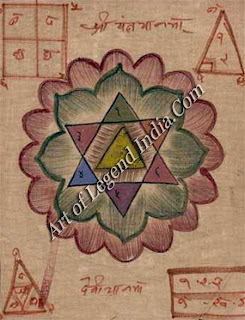
The specific
case of extension of ontological vocabulary to non ontological thought may have
another, somewhat more technical cause: the tantric Buddhist 'commentators had
to vindicate their preceptors' facile use of 'surrounding' terminology: by this
I mean that the first tantric teachers, such as the eighty four siddhas, who
were mostly rustic folk without much liking for and no pretence to learning,
were constantly exposed to Hindu village parlance around them, and popular
Hinduism was hardly distinguishable from popular Buddhism in early medieval
Bengal. Their more learned commentators in turn used learned non Buddhist
vocabulary to denote Buddhist concepts, in conscious analogy, perhaps, to their
unsophisticated preceptors' use of unsophisticated non Buddhist vocabulary. It
is a pattern frequently observed elsewhere: the words of Christ, often
indiscriminately reminiscent of Hellenic pantheistic ideology CI and the Father
are one'), had to be exegetically 'atoned for' by the learned Fathers and
scholastics in later days. St. Augustine's work was one great effort to
eradicate any trace of Hellenic and Alexandrina pantheism and to put dualistic
monotheism on a firm basis. Christ had been exposed to 'surrounding' non Judaic
terminology, the Province of Galilea
Being
suffused by popular Hellenic doctrines largely pantheistic ('What good can come
of Nazareth' John ). In later centuries, we have an exact analogue in the
teachings of Mohammed. The main difficulty for all learned commentators who
write as apologists for their naive preceptors consists in the attempt to make
the learned believe that the preceptors had entertained sophisticated
theological ideas which they chose to put into naive language for the benefit
of the crowd yet no exegete who does not also happen to be an anthropologist
would state the facts as they are: that the founders or the first saintly
preceptors of most religious traditions were naive, and did not teach
discursive theology, not because they did not want to, but because they knew
nothing about its.
Thus,
Bhusukapada, a siddhas listed in all Tibetan histories of Buddhism, seemed to
put a blend of Vijiianavada, Madhyamikas and Vedanta teachings in his saying:
'the great tree of sahaja is shining in the e worlds; everything being of the nature
of sunya, what will bind what? As water mixing with water makes no difference,
so also, the jewel of the mind enters the sky in the oneness of emotion. Where
there is no self, how can there be any non self? What is increate from the
beginning can have neither birth, nor death, nor any kind of existence. Bhusukapada
says: this is the nature of all nothing goes or comes, there is neither
existence nor non existence in sahaja. It is quite evident that once this sort
of poetry, vague in doctrinary content but rich in potential theological
terminology, is accepted as canonical, commentators of any of the philosophical
schools can use it for their specific exegeses.
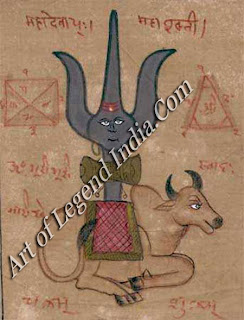
I think
an analogy in modern times is permissible, because village religion has not
changed very much in India. Thus, the unsophisticated sadhu and his village
audience use and understand terms like atman, Brahman, Maya; for them, these
terms are less loaded than for the specialist, but they are used all the same.
Similarly, .1 think Bhusuka, Kanh, and Saraha, etc., used sunya' and `sahaja'
in this untechnical, but to their rustic audiences perfectly intelligible,
sense; not, again, because of pedagogical prowess and `to make it easy', but
because those preceptors did not have any scholastic training for them; these
terms were as un loaded as for their audience, at least on the discursive
level.
This is
not to deny the possibility that the spiritual experience related to their
sadhana did enhance the charisma of these terms for the adepts.
Now of
all Indian ideologies, tantrism is the most .radically absolutistic, and the
'two truths' coalesce completely; the intuition of this coalescence indeed
constitutes the highest 'philosophical' achievement of the tantric (here I am
using 'philosophical' in the way H. V. Guenther does he translates 'rnal byor' yogi,
by 'philosopher'). Any Tibetan teacher, such as Kham lung pa, 'admitted the
theory of the two truths, according to which the 'All was either conventional
or transcendental'. There is a constant merger of the phenomenal samvrti into
the absolute paramartha, logically because the former has the 'void' sunya as
its basis, and in the experience of the adept, because he dissolves the
phenomenal in sunya, this being the proper aim of all sadhana is; and the frame
of reference wherein the tantric conducts all his sadhana is the complete
identity of the two. Thus the Guhyasamaja, one of the most important and oldest
Buddhist tantric texts, says (the Buddha Vairocana speaking), 'my
"mind" (citta, sems) is such that it is bereft of all phenomenal
existence, "elements" (dhatus) and "bases" (ayatanas) and
of such thought categories as subject and object, it is without beginning and has
the nature of sunya'. There are very few concepts which Hindu and Buddhist
tantrism do not share. The 'three bodies' (trikaya, sku gsurn) doctrine,
however, is uniquely Buddhist and has no parallel in Hindu tantrism.
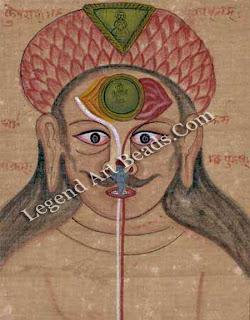
This, I
think, is the only case where there was a real separation of terminological
spheres: there is nothing like a trikaya' doctrine in Hinduism, although the
Kashmiri Trika' School of Saivism has traces of a threefold division of ‘body’
principles, possibly similar to the Vaisnava notion of the deity in its
threefold aspect as `attraction' (Satnkarsana), `Unrestrainability'
(Aniniddha), and 'the purely mythological' (Damodara). In the Mahayana
classification of the three 'bodies', definitional certainty is by no means
equally strong. Thus, dharma kaya and nirmanakaya (chos kyi sku and sprul sku),
it seems to me, are relatively un complicated notions, but there is a lot of
uncertainty about sambhoga kaya. On the Hindu tantric side, I think that, apart
from those mythological proper names which the Buddhist tantric pantheon does
not share, the only term Buddhist tantric literature avoids is Sakti in its
technical sense, i.e. as the dynamic principle symbolized as the female
counterpart to the static wisdom principle.

Summing
up on tantric philosophy, these arc the points that can be made: Hindu tantrism
and Buddhist tantrism take their entire speculative apparatus from non tantric
absolutist Hindu and Buddhist thought, and although systematized tantrism is even
more eclectic than pretantric ideologies, there is a pretty clear distinction
between Hindu and Buddhist tantric ideas. Common to both is their fundamental
absolutism; their emphasis on a psycho experimental rather than a speculative
approach; and their claim that they provide a shortcut to redemption. The main
speculative difference between Hindu and Buddhist tantrism is the Buddhist
ascription of dynatnicity to the male and of 'wisdom' to the female pole in the
central tantric symbolism, as opposed to the Hindu ascription of dynamicity to
the female and (static) wisdom to the male pole; and lastly, the difference is
terminological inasmuch as certain technical terms very few though are used by
either the Buddhist or the Hindu tantric tradition only. This book presupposes
familiarity with the basic doctrines of Hinduism and Buddhism it is for this
reason that the chapter on tantric philosophy is short and emendatory rather
than a survey. There is really no tantric philosophy apart from Hindu or
Buddhist philosophy, or, to be more specific, from Vedantic and Mahayana
thought.
The
diagram which now follows should provide a model for the interrelation of
doctrine and target in the tantric tradition. The late Swami Visvananda Bharati
suggested to Inc that the problem of variant doctrine and common target can be
likened to a 'children's top' (bhramarakridamkam). I found this a helpful
model:
Writer –
Agehananda Bharati
 I shall keep cautioning readers about the use of 'philosophy' and
'philosophical' in our context. Historians of western philosophy beginning with
Erdmann and uberweg in the last century, and continuing with virtually all academically
philosophers of the western world up to date have denied Indian thought the
title 'philosophy'. Enologists and oriental scholars, however, have been using
the term for Hindu, Buddhist, and Jain thought quite indiscriminately and this
did not matter too much because there was and there is the assumption that the
twain, professional orient lists and professional philosophers do not meet. I
think this is wrong. It is extremely difficult to make them meet, because a lot
of cross disciplinary studies are needed for both the philosophers will have to
read some original tracts of Indian thought and its paraphrase in other Asian
languages; and the orient lists will have to acquire sonic knowledge of
contemporary philosophy, especially on the terminological side. This has not
been done: scholars who wrote and write on Indian ' philosophers ' Stcherbatsky
, Raju, Glasenapp, Edgerton, Radhakrishnan, to mention but a few did not
seriously attempt to read modern philosophy and use its accurate terminology.
All of them somehow assume that western philosophy had reached its climax with
Kant, Hegel, or Bradley, and hence they do not feel the need to improve on
their archaic terminology. I Think
they are mistaken. Terminologies previous to that of the analytical schools of
twentieth century philosophy are deficient.' It could be objected that
contemporary occidental philosophy may be unequal to the task of providing
adequate terminology for Indian thought patterns; this may be so, but pre twentieth
century occidental philosophy is even less adequate; modern philosophy uses all
the tools of the classical philosophical tradition, plus the considerably
sharper and more sophisticated tools of multi value logic, logical empiricism,
and linguistic analysis.
I shall keep cautioning readers about the use of 'philosophy' and
'philosophical' in our context. Historians of western philosophy beginning with
Erdmann and uberweg in the last century, and continuing with virtually all academically
philosophers of the western world up to date have denied Indian thought the
title 'philosophy'. Enologists and oriental scholars, however, have been using
the term for Hindu, Buddhist, and Jain thought quite indiscriminately and this
did not matter too much because there was and there is the assumption that the
twain, professional orient lists and professional philosophers do not meet. I
think this is wrong. It is extremely difficult to make them meet, because a lot
of cross disciplinary studies are needed for both the philosophers will have to
read some original tracts of Indian thought and its paraphrase in other Asian
languages; and the orient lists will have to acquire sonic knowledge of
contemporary philosophy, especially on the terminological side. This has not
been done: scholars who wrote and write on Indian ' philosophers ' Stcherbatsky
, Raju, Glasenapp, Edgerton, Radhakrishnan, to mention but a few did not
seriously attempt to read modern philosophy and use its accurate terminology.
All of them somehow assume that western philosophy had reached its climax with
Kant, Hegel, or Bradley, and hence they do not feel the need to improve on
their archaic terminology. I Think
they are mistaken. Terminologies previous to that of the analytical schools of
twentieth century philosophy are deficient.' It could be objected that
contemporary occidental philosophy may be unequal to the task of providing
adequate terminology for Indian thought patterns; this may be so, but pre twentieth
century occidental philosophy is even less adequate; modern philosophy uses all
the tools of the classical philosophical tradition, plus the considerably
sharper and more sophisticated tools of multi value logic, logical empiricism,
and linguistic analysis. Than
are modern analytical thinkers; but more importantly, the fact of a system of
thought being closer in emotive tone to another system of thought does not guarantee
that the former is a competent arbiter of the latter. This wrong assumption
goes back to an even older historical phenomenon the great attraction, largely
sentimental, which nineteenth century German classical scholars and poets felt
for things Indian in the belief of a 'kindred sour; this is being echoed in
India by the majority of pandits and holy men: it is very hard to convince
pandits and monks in India that Sanskrit is not taught and spoken in high
schools in Germany, and that Germans are not the only Sanskrit scholars outside
India.
Than
are modern analytical thinkers; but more importantly, the fact of a system of
thought being closer in emotive tone to another system of thought does not guarantee
that the former is a competent arbiter of the latter. This wrong assumption
goes back to an even older historical phenomenon the great attraction, largely
sentimental, which nineteenth century German classical scholars and poets felt
for things Indian in the belief of a 'kindred sour; this is being echoed in
India by the majority of pandits and holy men: it is very hard to convince
pandits and monks in India that Sanskrit is not taught and spoken in high
schools in Germany, and that Germans are not the only Sanskrit scholars outside
India. 


























0 Response to "The Philosophical Content of Tantra"
Post a Comment